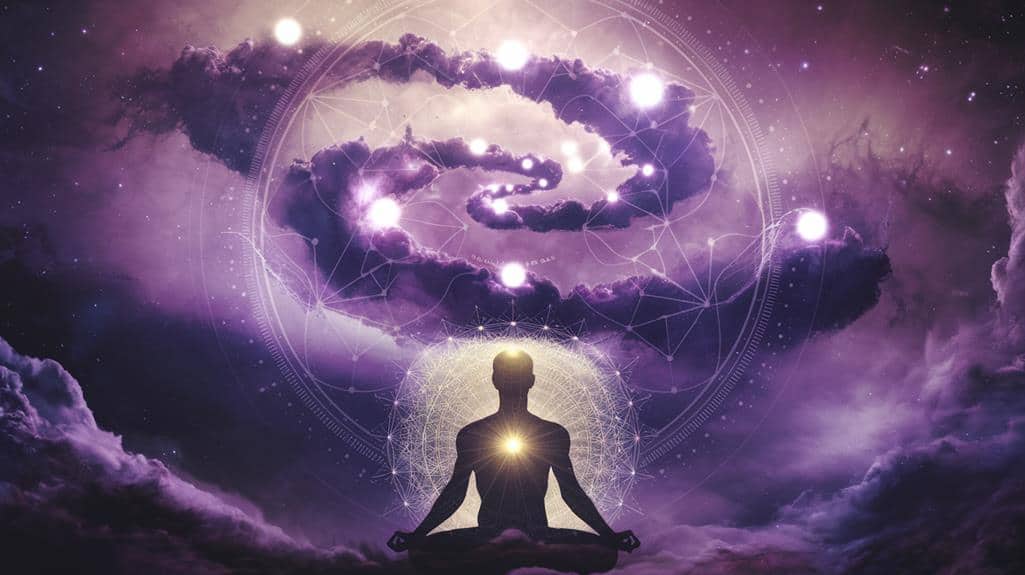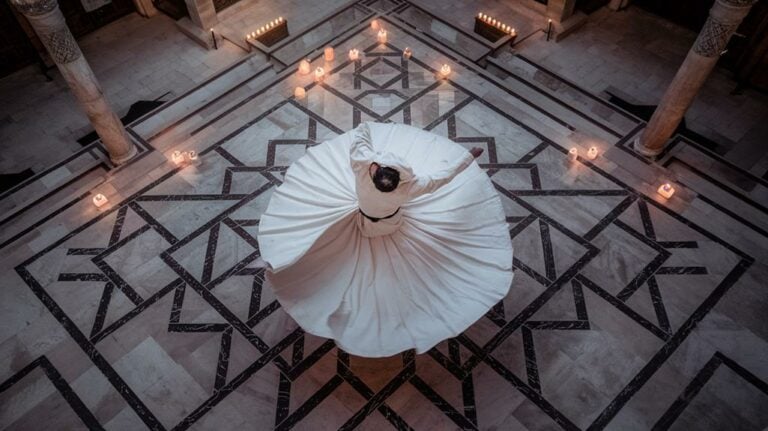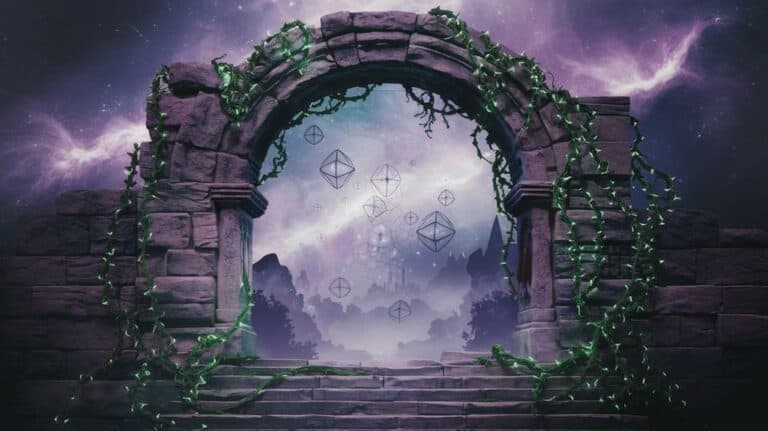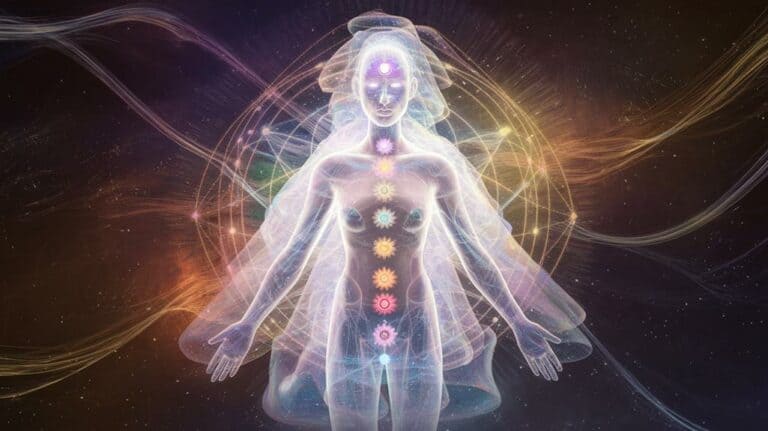The Psychology of Mystical Experiences
You’ve likely experienced moments that defy ordinary explanation – perhaps a profound sense of connection with the universe, a timeless state of pure awareness, or an overwhelming feeling of cosmic understanding. These mystical experiences aren’t just the domain of monks and mystics; they’re fundamental aspects of human consciousness that science is now beginning to unravel. While your rational mind might dismiss such encounters as mere quirks of perception, research reveals that these states carry measurable psychological benefits and leave lasting imprints on personality and worldview. What unfolds in the brain during these extraordinary moments, and how can you make sense of their deeper significance?
Defining the Mystical Experience
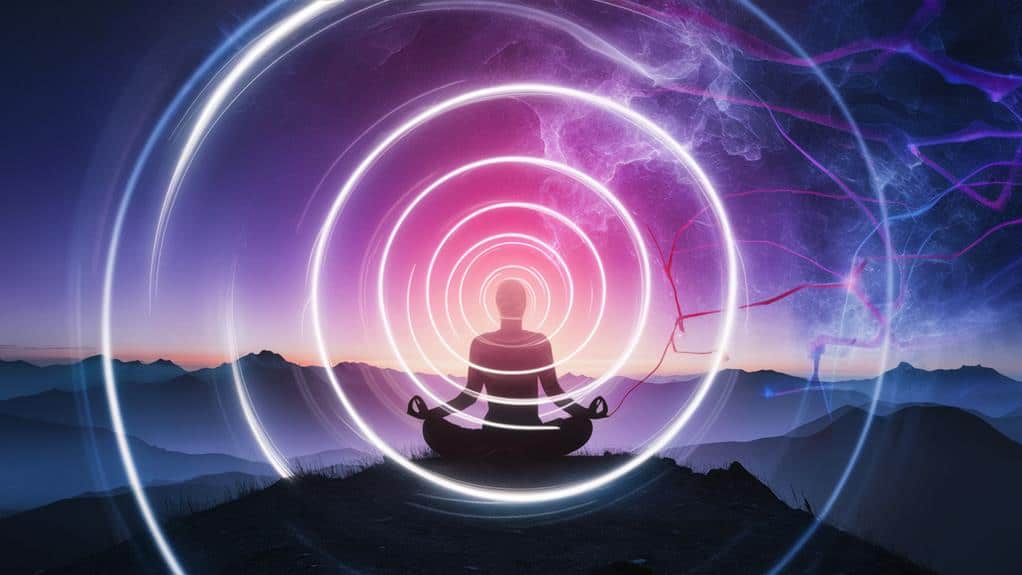
Grasping the nature of mystical experiences challenges both researchers and experiencers alike. When you’re confronted with something that transcends ordinary reality, you’ll find that words often fall short of capturing its essence. You’re entering a domain where conventional descriptions dissolve, and you’re left reaching for metaphors that only hint at the profound truth you’ve encountered.
A mystical experience isn’t simply an intense emotional state or a vivid dream – it’s a fundamental shift in how you perceive reality. You’ll recognize it by several key markers: a sense of unity with something greater than yourself, a dissolution of time and space, and an overwhelming certainty that you’re touching something real and significant. Your everyday sense of self often falls away, and you’ll find yourself immersed in what feels like pure consciousness or ultimate reality.
When you’re trying to understand these experiences, you’ll notice they share common elements across cultures and times: ineffability, noetic quality, transiency, and passivity. You’re not actively creating these states; rather, they’re revealing themselves to you, offering glimpses into dimensions of existence that usually remain hidden.
Historical Perspectives Across Cultures
From ancient shamanic rituals to modern religious practices, mystical experiences have shaped human consciousness throughout history. You’ll find striking parallels across diverse cultures, where seekers have consistently reported transcendent moments of unity with the divine or cosmos.
Whether you’re exploring the ecstatic dances of Sufi mystics or studying the vision quests of Native American traditions, you’ll discover that these experiences share remarkable commonalities.
In Medieval Europe, you’d have encountered Christian mystics like Hildegard of Bingen describing vivid celestial visions, while across the world, Buddhist monks were documenting their encounters with nirvana through detailed meditation manuals.
Today, you can trace how these historical accounts align with contemporary reports of mystical experiences, suggesting an underlying universal human capacity for transcendent awareness.
The ancient Greeks sought divine communion through the Eleusinian mysteries, while Chinese Taoists pursued unity with the Tao through contemplative practices.
You’re part of this continuing legacy, where each culture has developed its own vocabulary and frameworks to understand these profound states of consciousness, yet all point to a shared aspect of human experience that transcends cultural boundaries.
Neuroscience Behind Transcendent States
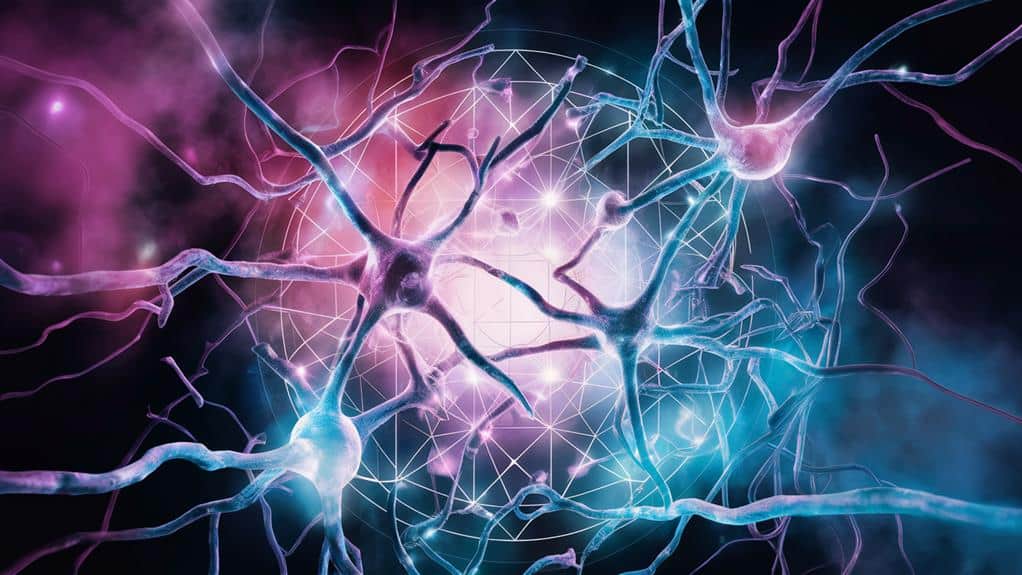
Modern neuroscience has revolutionized our understanding of mystical experiences by revealing their distinct neural signatures. When you’re in a transcendent state, your brain undergoes fascinating changes: your default mode network – responsible for your sense of self – becomes less active, while other neural networks light up in unprecedented patterns.
You’ll find that your parietal lobe, which helps you distinguish between self and environment, shows reduced activity during these profound moments.
You’ll discover that your brain releases powerful neurochemicals during mystical states, including DMT (dimethyltryptamine), which your pineal gland naturally produces. These substances can temporarily alter your consciousness, leading to what you might experience as encounters with the divine or cosmic unity.
Your prefrontal cortex, typically involved in executive function, shows unique activation patterns that correlate with feelings of ego dissolution and universal connectedness.
Through advanced neuroimaging, you can now witness how meditation and other contemplative practices physically reshape your brain’s architecture, creating neural pathways that make transcendent experiences more accessible.
This biological foundation doesn’t diminish the profound significance of your mystical encounters; rather, it illuminates the intricate dance between consciousness and your brain’s remarkable capacity for transformation.
Common Triggers and Catalysts
Understanding the biological mechanisms behind mystical states naturally leads us to explore what sparks these profound experiences.
You’ll find that certain conditions and catalysts consistently create openings for transcendent moments, whether you’re seeking them intentionally or they arrive unexpectedly.
Natural settings often serve as powerful triggers, especially when you’re surrounded by vast landscapes or gazing at star-filled night skies.
You’ll notice how deep meditation, rhythmic breathing, or extended periods of solitude can shift your consciousness toward mystical awareness.
Sacred music, particularly when it incorporates specific frequencies or drumming patterns, may reveal doorways to altered states.
You’re also likely to encounter these experiences during life’s pivotal moments – the birth of a child, the death of a loved one, or during periods of intense emotional or physical stress.
While some seek chemical catalysts through traditional plant medicines or modern synthetics, you’ll discover that simple practices like fasting, sleep deprivation, or extreme physical exertion can create similar openings.
Your brain’s natural capacity for transcendence often emerges when you’re pushed beyond ordinary parameters of consciousness.
Therapeutic Applications in Psychology
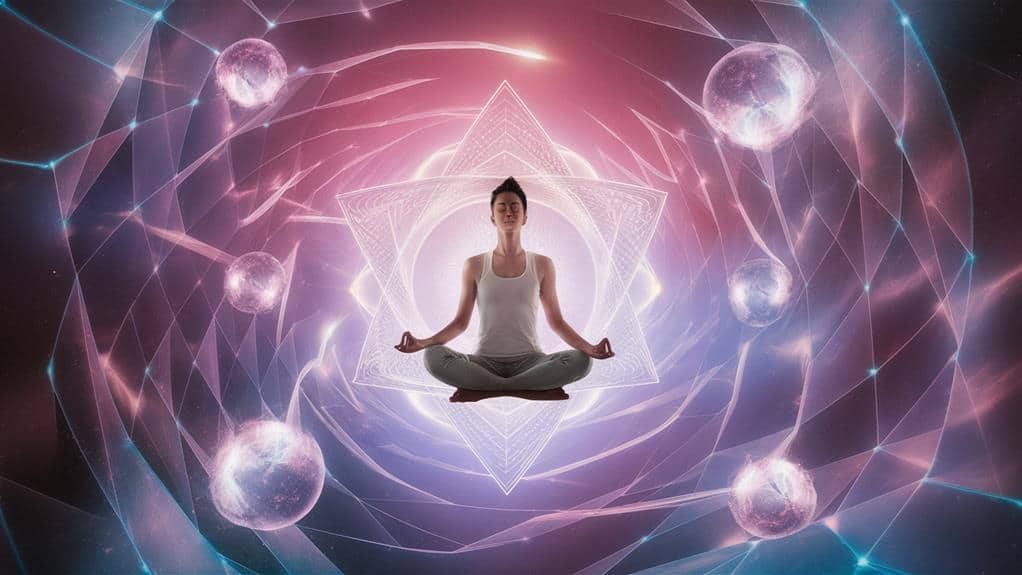
Integration of mystical experiences into therapeutic practice has revolutionized mental health treatment approaches. You’ll find that modern psychologists increasingly recognize these profound encounters as potential catalysts for healing, particularly when treating depression, anxiety, and existential distress.
Through carefully guided sessions, you’re able to explore and process these transformative experiences within a supportive clinical framework.
You’ll discover that therapists now incorporate various methods to help you integrate mystical experiences, from mindfulness-based interventions to specialized protocols designed for psychedelic-assisted therapy.
When you’re working with a skilled practitioner, you can safely examine the deeper meanings and insights gained during these experiences, allowing them to inform your healing journey and personal growth.
The therapeutic value extends beyond immediate psychological relief – you’re likely to experience lasting shifts in your worldview and sense of connection to something greater than yourself.
Research shows that when you properly integrate these experiences, you’ll often find improvements in your overall well-being, relationships, and spiritual understanding, leading to more meaningful engagement with life’s fundamental questions.
Research Methods and Measurement
Scientific investigation of mystical experiences requires rigorous methodological approaches and standardized measurement tools. You’ll find that researchers employ diverse methods, from quantitative scales like Hood’s Mysticism Scale to qualitative approaches including phenomenological interviews and detailed personal narratives. These tools help you understand the depth and breadth of transcendent experiences while maintaining scientific rigor.
When you’re examining mystical experiences in a research context, you’ll encounter both laboratory studies and naturalistic observations. Modern neuroscience has enabled you to witness the brain’s activity during meditative states through EEG readings and fMRI scans, while psychological assessments can track your shifts in consciousness and emotional states.
You’ll discover that cross-cultural studies have become increasingly important, as they’ve revealed universal patterns in mystical experiences across different societies and belief systems.
The challenge you’ll face lies in bridging the gap between subjective experience and objective measurement. Researchers have developed validated questionnaires that help you quantify aspects of mystical experiences, including ego dissolution, unity consciousness, and noetic quality, allowing for systematic analysis while honoring the profound nature of these transformative moments.



